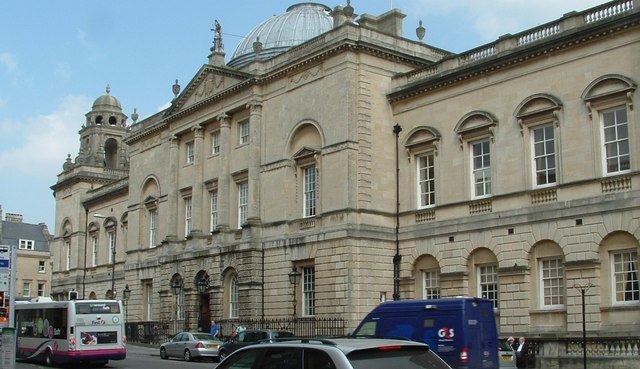Built 1775 Reference no. 442118 Phone +44 1225 394041 | Designated 12 June, 1950 Opened 1778 Architectural style Neoclassical architecture | |
 | ||
Location Bath, Somerset, England Address High St, City Centre, Bath BA1 5AW, UK Similar Bath Assembly Rooms, Victoria Art Gallery, Grand Pump Room - Ba, Bath Street - Bath, Pulteney Bridge | ||
Regency ball july 2011 at the guildhall bath
The Guildhall in Bath, Somerset, England was built between 1775 and 1778 by Thomas Baldwin to designs by Thomas Warr Attwood. It has been designated as a Grade I listed building.
Contents
The current Bath stone building replaced a Stuart Guildhall, built in 1625, which itself replaced an earlier Tudor structure.
The facade has 4 Ionic columns and the building is surmounted by the figure of Justice. The central dome was added in 1893. It forms a continuous building with the Victoria Art Gallery and the covered market.
The interior includes a banqueting hall with engaged Corinthian columns. It contains 18th century chandeliers and original royal portraits. The room is used on royal visits to the city including Queen Elizabeth II who had lunch in the banqueting room in May 2002.
It now houses the Bath and North East Somerset Council chamber, the Register office for Bath and North East Somerset, and is used as a wedding venue. The Guildhall also serves as one of the venues for the Bath International Music Festival and other cultural events. It has been used for filming period dramas.
The Guildhall was originally built as a town hall: it has never served as the meeting place of any specific guild. A suggested etymology is from the Anglo Saxon "gild", or "payment"; the guildhall being where citizens came to pay their rates.
Bath Guildhall Market
Bath Guildhall Market is located behind the Guildhall, and can be accessed by its own entrance tunnel through the Guildhall. It has traded on its site for the last 800 years. About 20 stall holders trade there nowadays.
